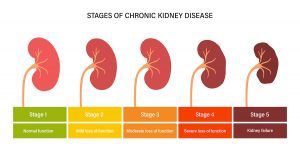Strengthening microplastic regulation to protect our kidneys
More than 37 million Americans have kidney disease, leading to severe swelling, fatigue, back pain, urination issues, shortness of breath and more.
Of those, roughly 808,000 Americans have
subsequently developed kidney failure, after the disease progresses to the
inability of filtering out waste products from blood and producing urine. These
patients can become very sick and require either kidney transplants or
long-term dialysis to stay alive.
Though many wait for years for a transplant or subject
themselves to painful dialysis protocols, more than 250,000 people (about
half the population of Wyoming) die annually from kidney disease in the
Americas.
While many factors — including medical co-morbidities,
age and genetics — can contribute to kidney disease, more and more research is coming out showing how tiny
plastic particles that we inadvertently consume on a regular basis damage our
kidneys and may predispose us to kidney failure.
Systemic racism and environmental health disparities are forcing communities of color to bear the brunt of this problem, due to limited access to healthcare in ‘sacrifice zones’ and potential racial bias and stereotyping within the healthcare system itself.
Ingestion of microplastics most commonly happens through
drinking water, single-use plastic containers and utensils and food. Once
ingested, these tiny plastic particles can travel to our kidneys and instigate
oxidative stress and inflammation, which can lead to kidney cell death. Since
many of us will ingest these microplastics, this damage accumulates and worsens
kidney function over time.
Though this impacts every American, Black people and Latinos are 3.4 times and 1.3 times,
respectively, more likely to develop kidney failure. As a volunteer at the
University of Florida medical school’s free clinic, I see how most of the
patients are from underserved or minority backgrounds and have medical
challenges further complicated by the realities of low income and poor living
standards.
Given that microplastic prevalence and water pollution
are highest in many previously redlined communities along with
systemic issues related to healthcare access, environmental reform in these
communities is of significant importance.
Currently, there are few restrictions placed on
microplastics, which means most of the American population is exposed to these
dangerous substances. It is near impossible to avoid them; however, there are
small steps you can take to reduce your exposure: opting for natural fiber
personal care products, encouraging local businesses to reduce plastic
packaging and using advanced water filtration systems for drinking water and in
your washing machine are just a few.
Given the impact on patient lives and the severe burden
on our healthcare system, it is important for us all to write to our
legislators to encourage passing bills that limit microplastics in our
communities along with having strong environmental reform led by the U.S.
Environmental Protection Agency.
Rohan Arora is an environmental health activist
and founder of The Community Check-Up, a national environmental health group
aiming to reduce environmental health disparities through youth empowerment and
educational outreach.
